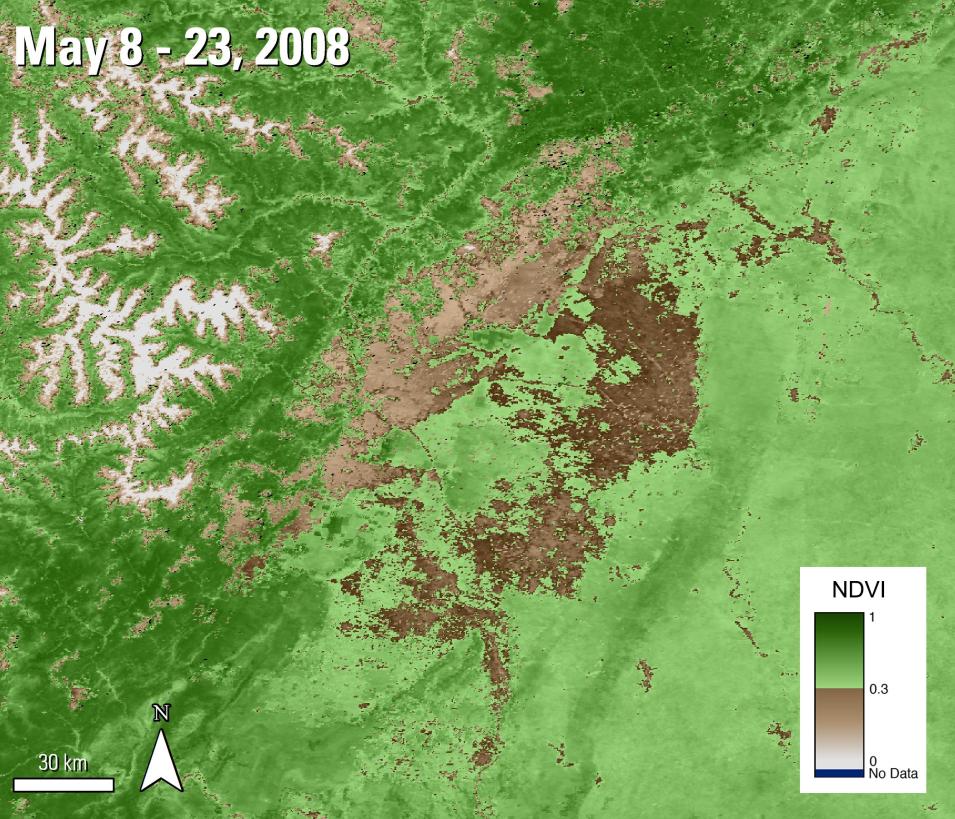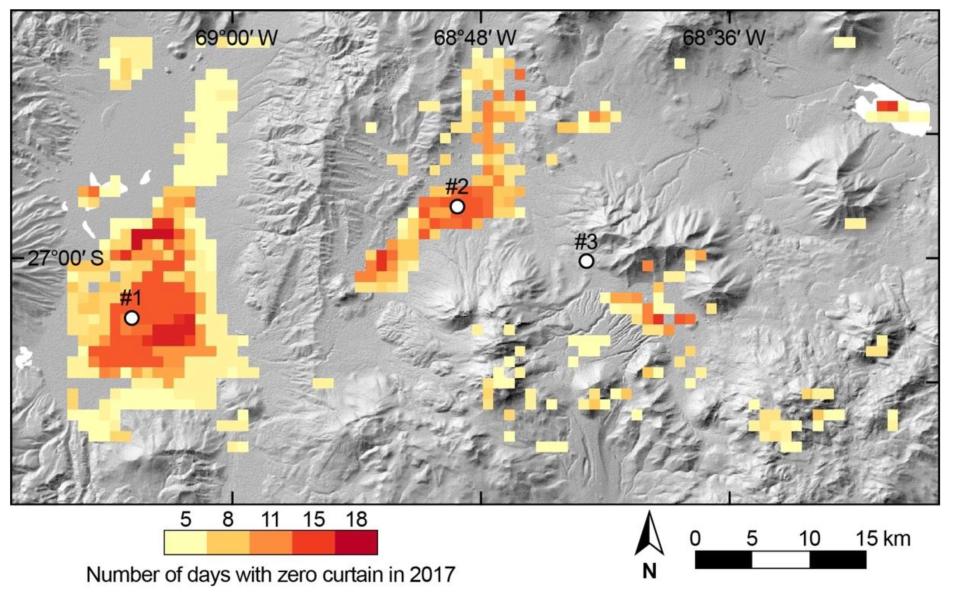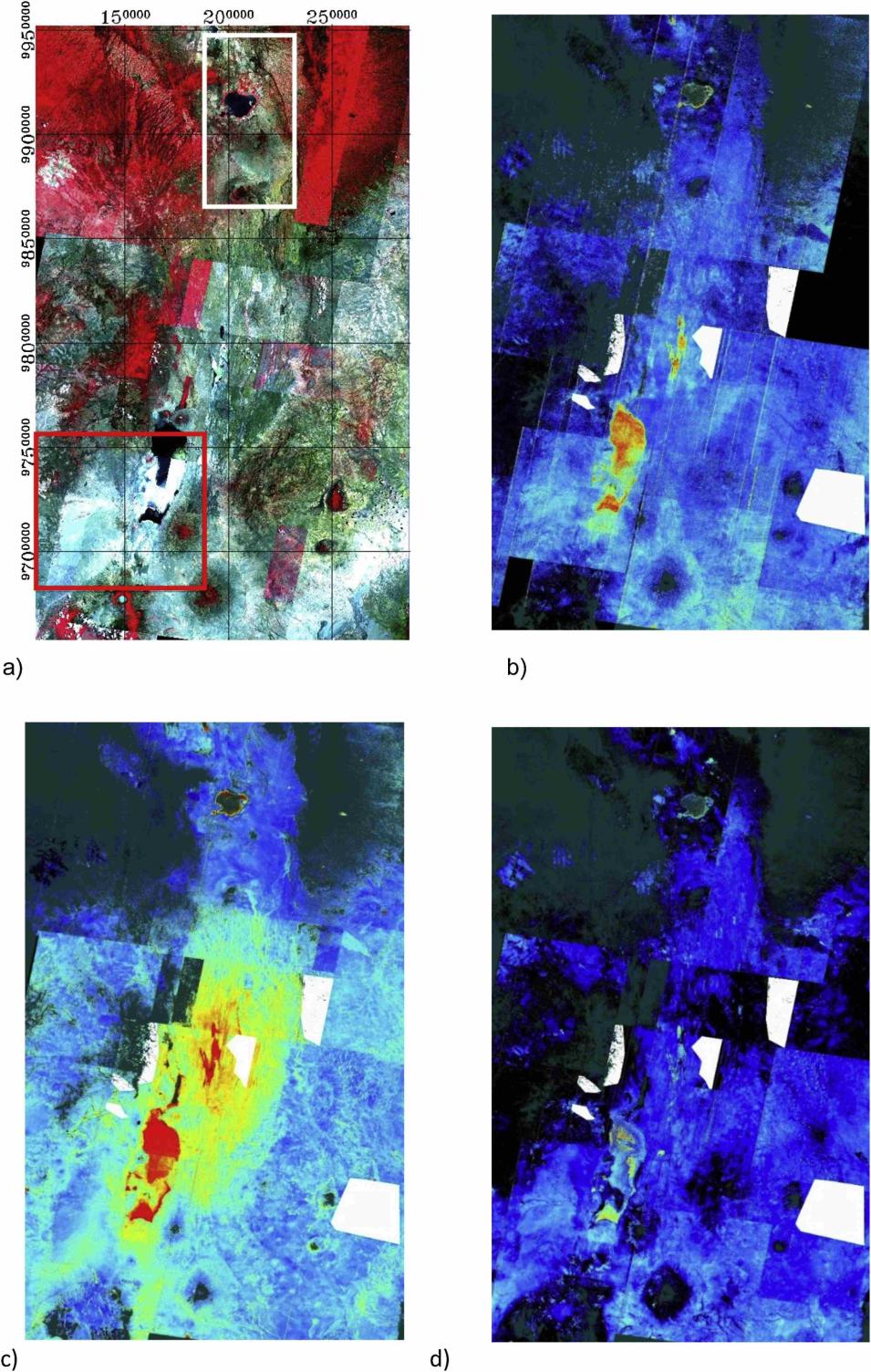Science Objectives
Strong earthquakes can lead to disturbances on the land, particularly in mountainous areas, that later can lead to landslides during heavy rainfalls years after the earthquake occurred. In their paper "Decadal vegetation succession from MODIS reveals the spatio-temporal evolution of post-seismic landsliding after the 2008 Wenchuan earthquake" published in Remote Sensing of Environment, Yunus and others (2020) set out to study post-seismic landslides related to the 2008 Wenchuan earthquake in the Sichuan province of China near Chengdu using 16-day Normalized Difference Vegetation Index data from Terra MODIS (MOD13Q1). This earthquake took place on May 12, 2008. The researchers are using NDVI data from 2000 – 2018 to observe the area prior to the earthquake and then quantify the vegetation recovery after 2008.
Instruments Used
The authors specifically chose to use the Terra MODIS NDVI data due to the abundance of cloud-free images that are available. A recovery rate (VRR) function is used to quantify the rate of regrowth in the area.
Major Findings
The authors found that 83 percent of the vegetation on the co-seismic landslides recovered within a decade after the earthquake. Prior to the earthquake, NDVI values in landslide areas ranged from 0.60 - 0.69, averaging at 0.65. After the earthquake these values dropped to .40. The values slowly increased to .44 by 2010, with a positive trend of the vegetation returning to pre-earthquake values around 2016. Based on the NDVI recovery trend in their research, the authors believe the area may take 18 years for landslides in the area to return to pre-earthquake level.
Yunus and others (2020) used the Application for Extracting and Exploring Analysis Ready Samples (AρρEEARS) to download data for their research project. AppEEARS is an application that can be used to perform data access and transformation processes, including subsetting data spatially, temporally, and by layer. Users can run requests via a point extraction or via an area extraction to mosaic their data to their study area. Visit AppEEARS to learn more.
References
Publication Reference
Yunus, A.P., Fan, X., Tang, X., Jie, D., Xu, Q., and Huang, R., 2020, Decadal vegetation succession from MODIS reveals the spatio-temporal evolution of post-seismic landsliding after the 2008 Wenchuan earthquake: Remote Sensing of Environment, v. 236, art. no. 111541. doi:10.1016/j.rse.2019.111476
Image References
Granule IDs
- MOD13Q1.A2008129.h26v05.006.2015175092228
- MOD13Q1.A2008129.h26v06.006.2015175090917
- MOD13Q1.A2008129.h27v05.006.2015175090632
- MOD13Q1.A2008129.h27v06.006.2015175090631
Data Citation
Didan, K.. MOD13Q1 MODIS/Terra Vegetation Indices 16-Day L3 Global 250m SIN Grid V006. 2015, distributed by NASA EOSDIS Land Processes DAAC, doi:10.5067/MODIS/MOD13Q1.00
Identifying Zero Curtain for Permafrost
Researchers used MODIS and Advanced Spaceborne Thermal Emission and Reflection Radiometer (ASTER) thermal data to detect zero curtain effects as indicators of permafrost in the Atacama Andes.


